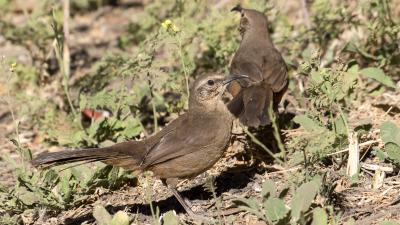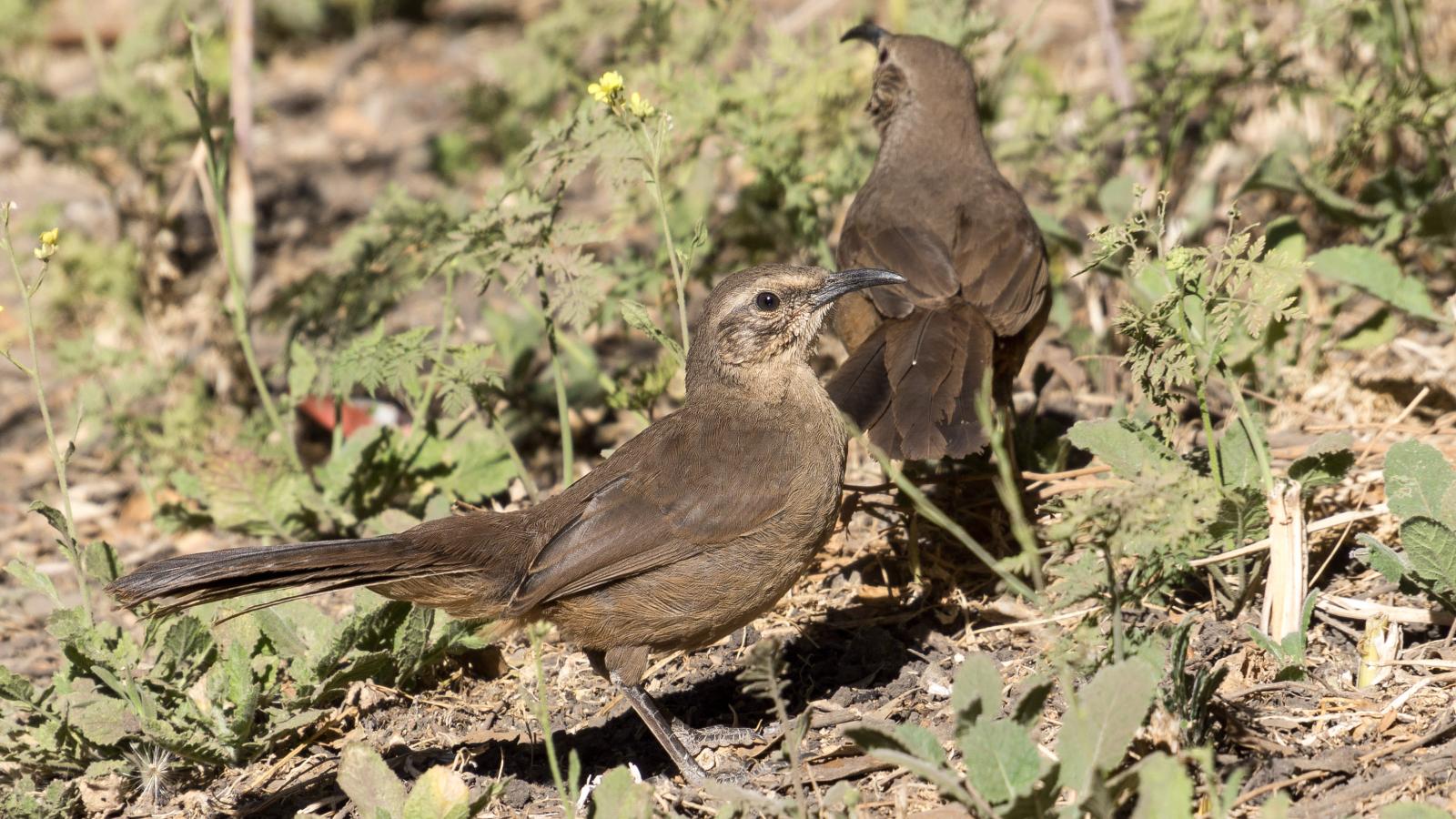This oddly shaped bird is the California thrasher (Toxostoma redivivum). This species’ most unique feature is its deeply curved bill. California thrashers forage primarily on the ground by sweeping through leaf litter and soil with their sickle-shaped bills. In fact, they spend most of their time on the ground, though they are rarely seen because they tend to keep themselves hidden in dense-brushy cover. When they do end up out in the open, they will run swiftly on their muscular legs, with their long tails raised high for balance. If faced with danger, a California thrasher is more likely to run away than fly away!
These birds mate for life and will stake out small territories as pairs. They remain in these territories for the entire year and rarely wander even short distances from their breeding areas. The breeding season of the California thrasher lasts from February until July. Both parents work together to protect the territory, build the nest, incubate the eggs and feed the young. Corvids, like the common raven (Corvus corax) and the California scrub jay (Aphelocoma californica), are common predators of thrasher eggs and nestlings.
California thrashers are close relatives of mockingbirds and are known to be “striking and exuberant songsters.” They can mimic a wide range of species including the American robin, the house finch, the Northern flicker, and more, though it is mostly known for its own complex song which often lasts up to five minutes.
California thrashers are fairly common in chaparral habitats and oak woodlands, and will even venture into brushy suburban areas. This bird used to be much more common on the coast, but widespread urbanization has pushed its range inland.


